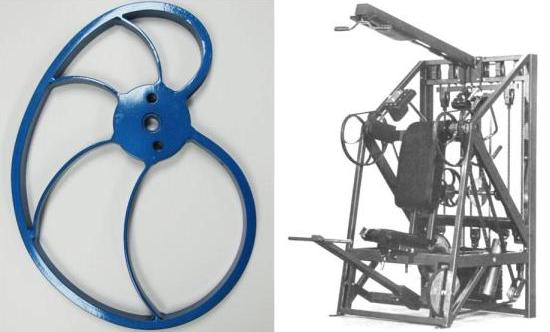
Arthur Jones, the inventor of the Nautilus machinery, was also a pioneer in the fields of exercise physiology and strength training. At the time, body builders spent multiple hours every day in the weight room in order to pack on their alien-like muscle mass. One of Jones’ contentions was that by spending less time in the weight room and instead lifting more intensely, identical gains could be made. And, when plateaus were reached, Jones further instructed body builders to cut back yet further on their lifting sessions because the muscles needed more rest to continue progressing, eventually cutting back to two 45-minute sessions per week. Crazy stuff at the time!
The basis of Jones’ hypothesis was that one super intense set was worth multiple less intensive sets. Foundational to this approach was the concept of the double exercise, which was built into many of the Nautilus machines. Double exercises is the concept of performing a muscle isolating exercise to exhaustion followed immediately by a compound exercise also to exhaustion. If you were working the legs, you would do the hamstring curl or the quad extension (isolating exercise) followed by the leg press or squats (compound exercise). The benefit of this approach is that by pushing the focus muscle (hamstring or quad) into a deep state of fatigue – first by isolating it and then by using it further in a multi-muscle exercise – that strength gains would come more quickly.
It’s difficult if not impossible to find Nautilus equipment anymore. But, you can still practice the concept of the double exercise in any modern gym, regardless of the equipment or lack thereof.
Simply, pick a target muscle group and perform a single-joint isolation exercise with it. We already talked about the legs above, so with the arms this could be the bicep curl. Do one set of 8-12 reps to exhaustion, then immediately (read: with no rest) perform one set of a multi-joint exercise, also 8-12 reps. In this example, this could be chin-ups.
The theory behind this technique is simple. In the isolation exercise, you work the target muscle group as hard as you can in order to induce a state a muscle fatigue. Then just when the muscle fibers think they can't handle any more, the assisting muscles in the compound movement force the target muscles to continue working, which pushes them into an even deeper state of fatigue. Can you see why just one double exercise is all you need to do for an effective strength workout?
Empirically, Jones knew that low-volume, high-intensity training was the key to efficient strength gains. Unfortunately, he died before his hypothesis became scientifically validated. But, scientists have uncovered a key muscle growth molecule which has been named mTORC1.
Studies show that the more mTORC1 you can encourage your body to make, the better and faster your strength gains. And, the very best way to stimulate mTORC1 is to train using high intensity muscle overload while minimizing volume. This is precisely what Jones advocated and the body builders who followed his advice realized. While strength training is important for any endurance athlete, it is of critical importance for Masters athletes. If those aged 40+ want to slow the inevitable marching of time, baking year round strength training into your training routine is a must. Beyond combatting the erosion of muscle mass, strength training done properly also helps fight injury, promote bone density and increase power. The key is to conduct your strength training properly. I’m saying it here – it is ridiculous for endurance athletes to “lift for endurance.” Low weight/high rep lifting is proven ineffectual. So why do it?
Targeted, focused sessions that follow the above low-volume, high-intensity protocol are indeed tough. But, they are short enough that they won’t negatively impact your ability to train properly in your primary sport. Yes, you will feel some fatigue, even some stiffness the next day. However, because the lifting session is in the 20-30min range, you can reasonably dedicate 2 sessions a week to this program without sapping your energy.
In the off-season or pre-season, sessions can be a little longer (30-40 minutes) and incorporate a broader number of exercises. However, now that we are in the competitive season, I would suggest you complete 4-6 leg exercises (2-3 isolation, 2-3 compound), 4 upper body exercises (2 and 2), and another 2-3 core exercises. Rest 60-90 seconds after every compound exercise (remember, no rest at all between an isolation exercise and its complementary compound exercise). This should get you done in 20-25 minutes.
Masters athletes lose the gains from strength training in as few as 8 weeks. Best to keep the lifting sessions going until the closing weeks before your key race, so that all your hard work comes to a nice peak on race day.
Happy Training,
Coach Nate

 RSS Feed
RSS Feed